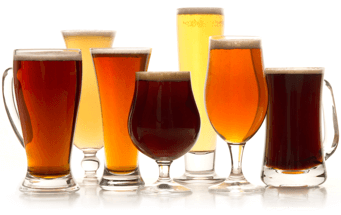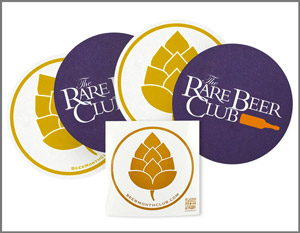Brauerei Grieskirchen - Jörger Weisse
-
ABV:
5.10% -
Serving Temperature:
45-50° F -
Suggested Glassware:
Weizen Glass
Last month we brought you two craft brewed beers from Mexico. This month, we have another brewery from just ‘south of the border.’ In this case, the reference point is not the USA, but Germany and the Czech Republic (great brewing nations both) and the brewery is located just south of where the borders of both nations intersect. Got your geography caps on? We are of course talking about Austria, a nation which itself is home to a mighty brewing heritage. The capital city, Vienna, can actually claim three beverages of national interest: coffee, left by the Turks in the late 17th century, a robust wine industry, and beer, which not surprisingly, is our personal favorite. The history of our favorite Austrian beverage is perhaps the most impressive of the three. At one point, an Austrian brewing family, led by Anton Dreher, controlled the largest business conducted under one management in continental Europe. And at a time when beers from Munich were still dark brown and the pale brilliance of the emerging Pilsener stood in contrast, in all its alluring novelty, Vienna featured unique beers that bore a reddish amber color, from which many brewers since have drawn inspiration. We take for granted today that beer can come in just about every shade, from ultra pale straw to inky black, but this was not always the case and the reddish amber hues found in Vienna’s beers contributed greatly to the color palate, and flavor profile, of beer.
Interestingly, there’s another link to Mexico—last month’s featured country—that can be drawn here, and that is the fact that Mexico still memorializes this famous innovation in beer in the form of a style of lager which they call “Vienna.” And any homebrewers or professional brewers out there will recognize the familiar term “Vienna malts,” which are no longer made exclusively in Vienna (or even Austria) but are still used today to contribute reddish hues and toasty notes to today’s beers. But perhaps even more important is Austria’s role, albeit contested over the years, in the development of lager beer. Until the mid-1800s, all commercially produced beer was fermented with top-fermenting (aka ale) yeast. But in 1841, the first beer brewed with bottom-fermenting (aka lager) yeast was born. And while the Czechs get credit for creating the world’s most popular style of beer, Pilsner (which is a specific type of lager created in the Bohemian town of Pilzen, hence the name), lager was born in Austria. This major brewing development came about in a spirit of collaboration between a Munich brewer, Garbriel Sedlmayr, and Anton Dreher, during a visit to Dreher’s Vienna plant in 1841. As you can imagine, this caused much debate between Munich and Vienna over the years as to the origin of lager beer, enough so that Adolph Hitler himself ordered a commission of inquiry on the matter. In 1942, the commission ruled that it was in fact Dreher who had produced the first modern lager beer. Perhaps the fact that the Nazi party owned this determination may have led to less touting of the declaration than would have otherwise ensued if a different political entity had performed the research.
Almost exactly midway between Munich and Vienna lies the small town of Grieskirchen, Austria. For over 300 years, Brauerei Grieskirchen has brewed beer here using only traditional methods and local ingredients. The flagship of the brewery is their Grieskirchner Pils, featuring local, aromatic hops—and we’re the first to bring it into the states—it’s never before been available domestically. And, while Bavaria has its famous beer purity law known as the Reinheitsgebot of 1516, the Austrians have their own purity law laid out in the Codex Alimentarius of the Hapsburg period (the Hapsburgs were the ruling family of Austria and the Austro-Hungarian empire, 1278-1918, and the Holy Roman empire from 1438-1806). Like the Reinheitsgebot, it too restricts beer to a handful of specific ingredients, but where the German law mandates that the only permissible grain is barley, the Austrian law requires that beer be made with water, hops and “cereals,” which is less restrictive and in fact, permits wheat to be used to produce beers. Even under the Reinheitsgebot, wheat beers were in high demand—but they could not legally be produced in Bavaria, so naturally a market for them sprang up in Grieskirchen, a border town just at the eastern edge of Bavaria. Thus was born a proud tradition of Austrian wheat beers, and we’ve proudly procured one of Austria’s best for you to try (only a few cases of the stuff have ever been sold in the US, so your membership in our Beer of the Month club has afforded you the chance to be among the first in the country to ever try this beer!). Enjoy both of these tasty Austrian beers, for each bottle presents the opportunity to taste a little bit of history (a small part of which is their US debut). Prost!
If you read German and would like more information about the brewery, check out their website at www.harmer.at.

Unmatched Variety by style, brewery & country
Choose from Five different Beer Clubs offering unmatched variety by brewery,
country of origin, and beer style to suit your specific tastes.


